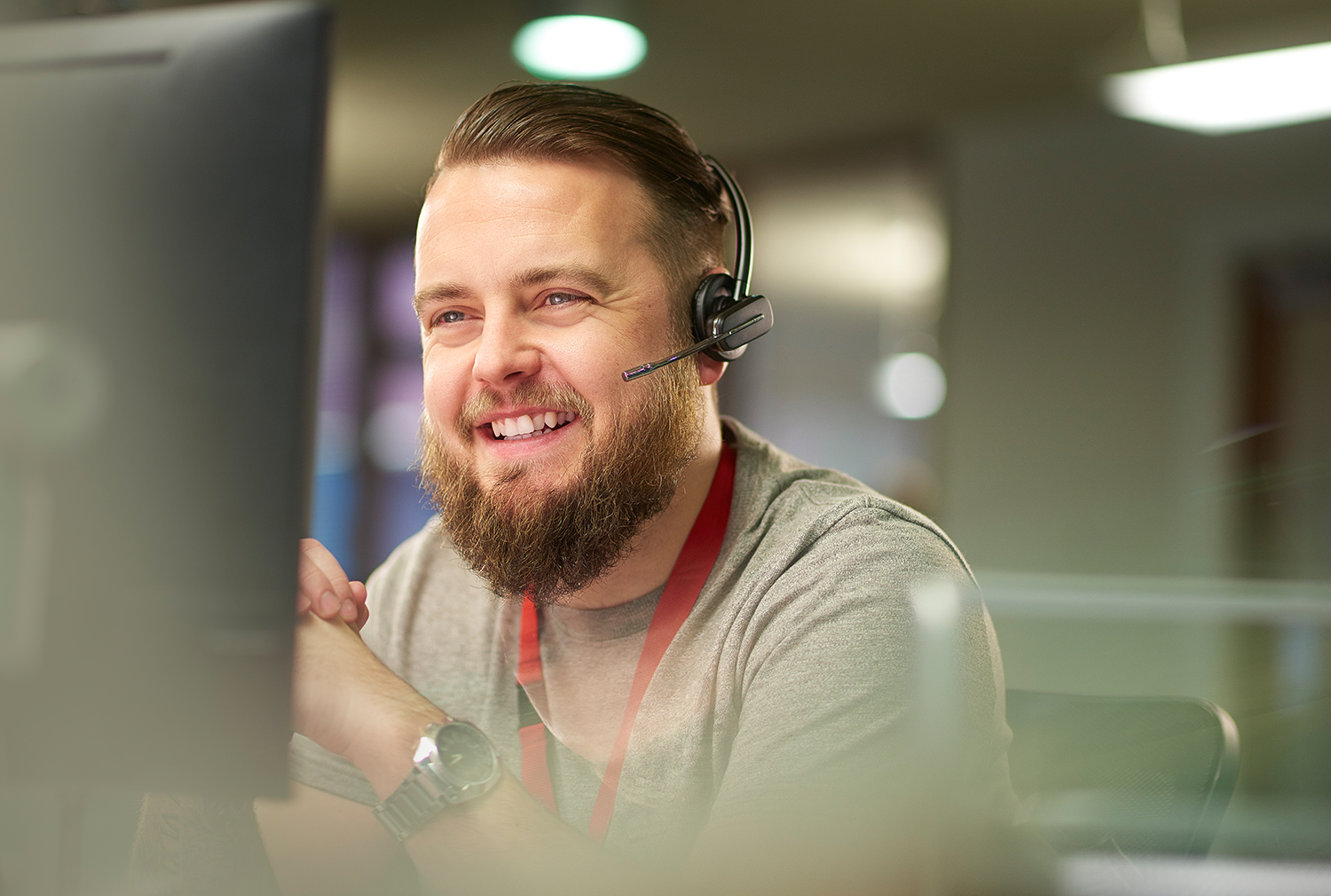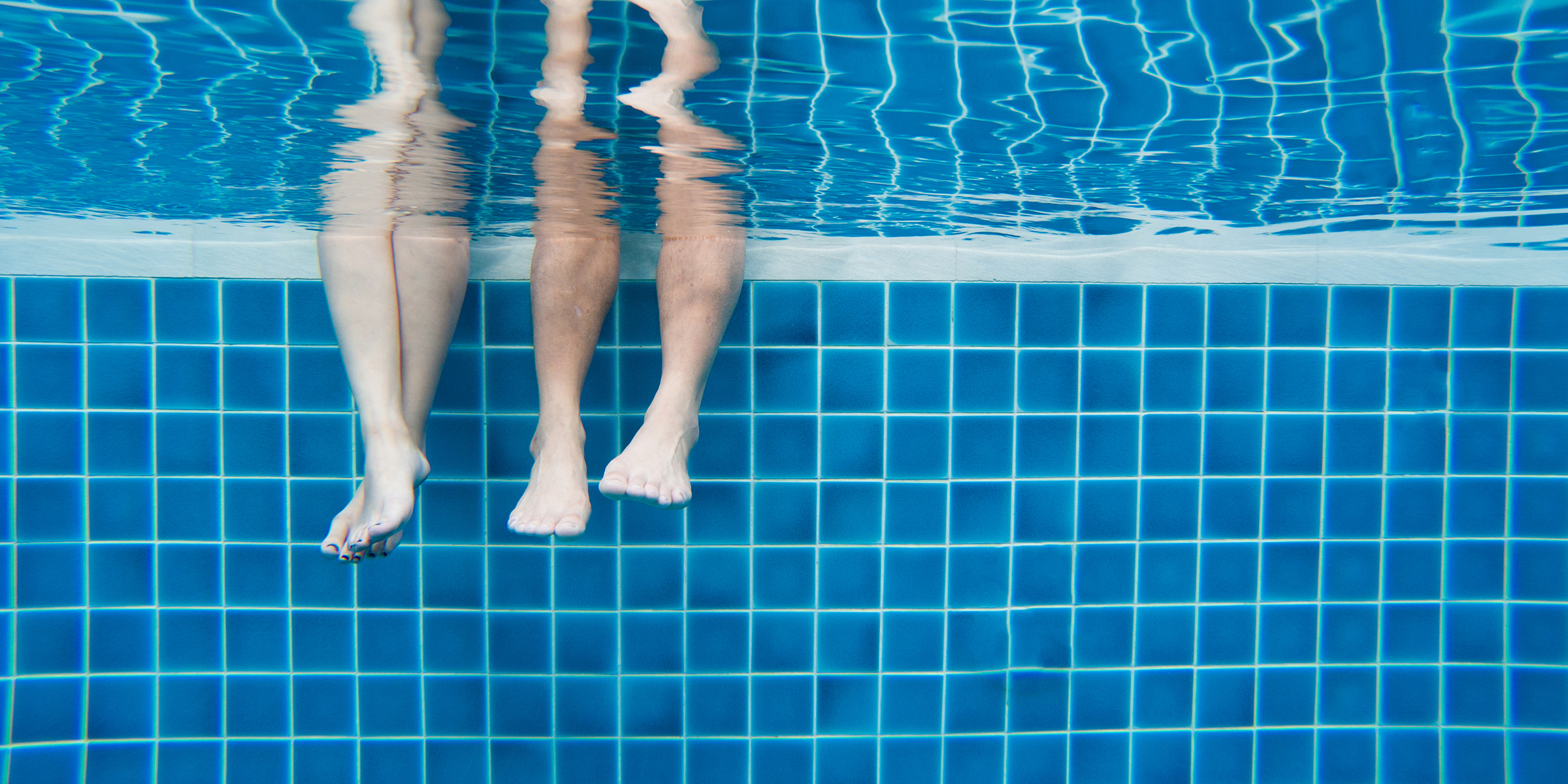Maintaining your pool can be much easier than you think. By ensuring that you have the right chemicals on hand, you can quickly and easily address any imbalances before it becomes a bigger problem.
By learning about the chemicals needed for proper pool maintenance, you can rest assured that your pool will always be in top-notch condition. Of course, you should always exercise caution when handling and storing swimming pool chemicals. For more information, have a read of our handy Pool Chemical Guide.
Understanding the best products for your pool can seem overwhelming, but it doesn’t need to be. From chlorine to pH balancers, Hy-Clor has you covered. Are you wondering: “what chemicals do I need for my pool?” Sit back, grab a towel, and get ready to dive into the world of pool chemicals!

A Reminder About Pool Chemical Safety
Before we look at what chemicals you need for your pool, here are some essential safety rules to follow when handling pool chemicals.
- Wear protective gear like gloves and goggles to protect your skin and eyes from irritation or burns.
- Store chemicals in a well-ventilated, cool, dry area away from direct sunlight and moisture.
- Keep chemicals out of reach of children and pets.
- Never mix different pool chemicals- add each chemical separately and only according to the recommended amounts.
- Read labels carefully before usage, following instructions for application and storage.
- Dispose of chemicals properly, following local regulations for safe disposal methods.
Now that you understand basic pool chemical safety, let’s answer your question, “what pool chemicals do I need?”
Algaecide
Algaecides are used in pool maintenance to target pesky algae growth. They work by breaking down the structure of algae cells, making them easy to remove from your pool.
For the best results, it’s important to use the right amount of algaecide based on the size and type of your pool. Hy-Clor Super Algaecide suggests using 225ml per 10,000 litres of water if you’re dealing with severe algae.
When managing algae in your pool, avoid using algaecides and chlorine shock simultaneously. Chlorine can counteract the effects of algaecide if not added at the right time.
First, use shock to eliminate the algae and bring your pool water back into balance. Once the chlorine levels decrease, add algaecide to provide additional protection against future growth. Always check product labels for specific application steps, as different algaecide treatments may require other instructions.
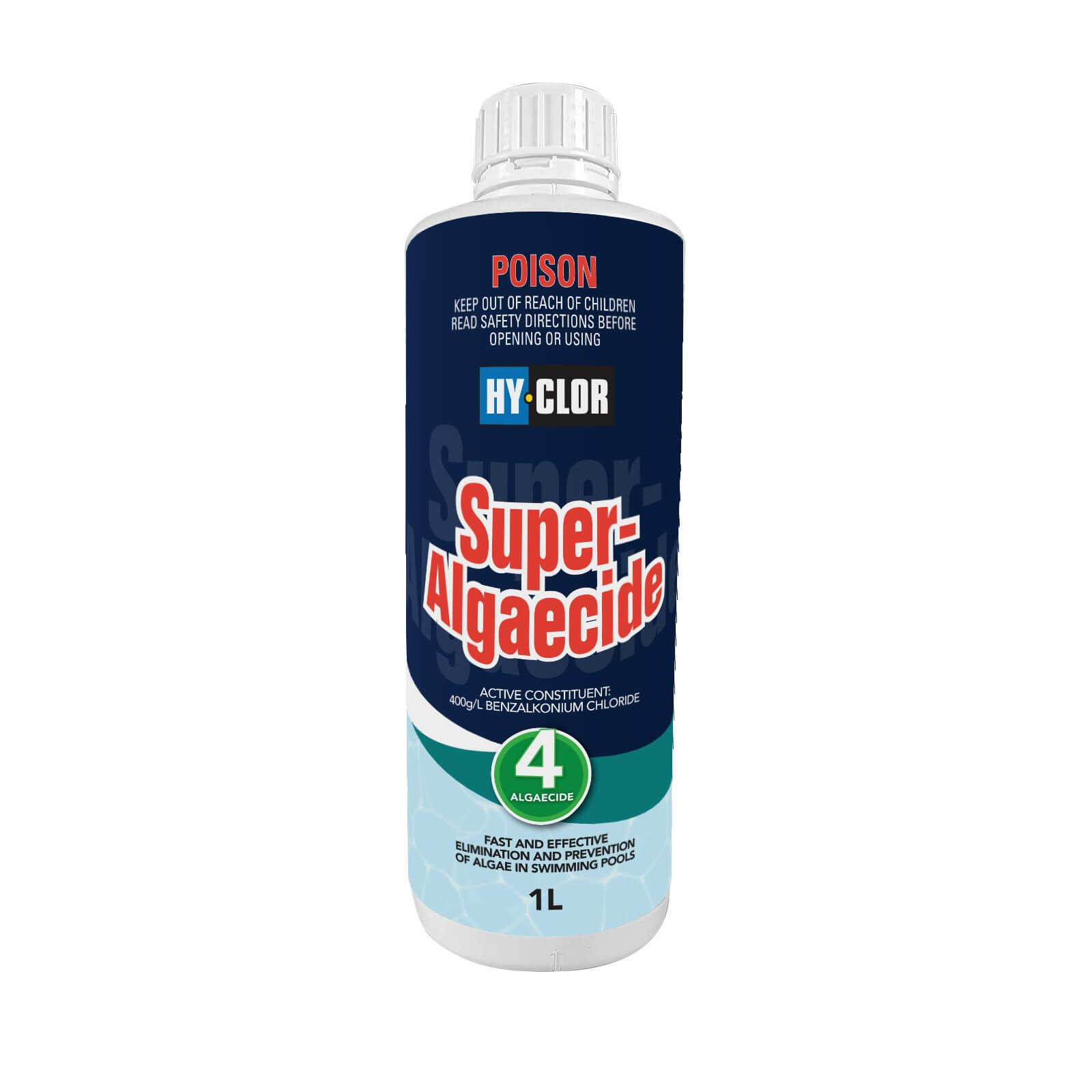
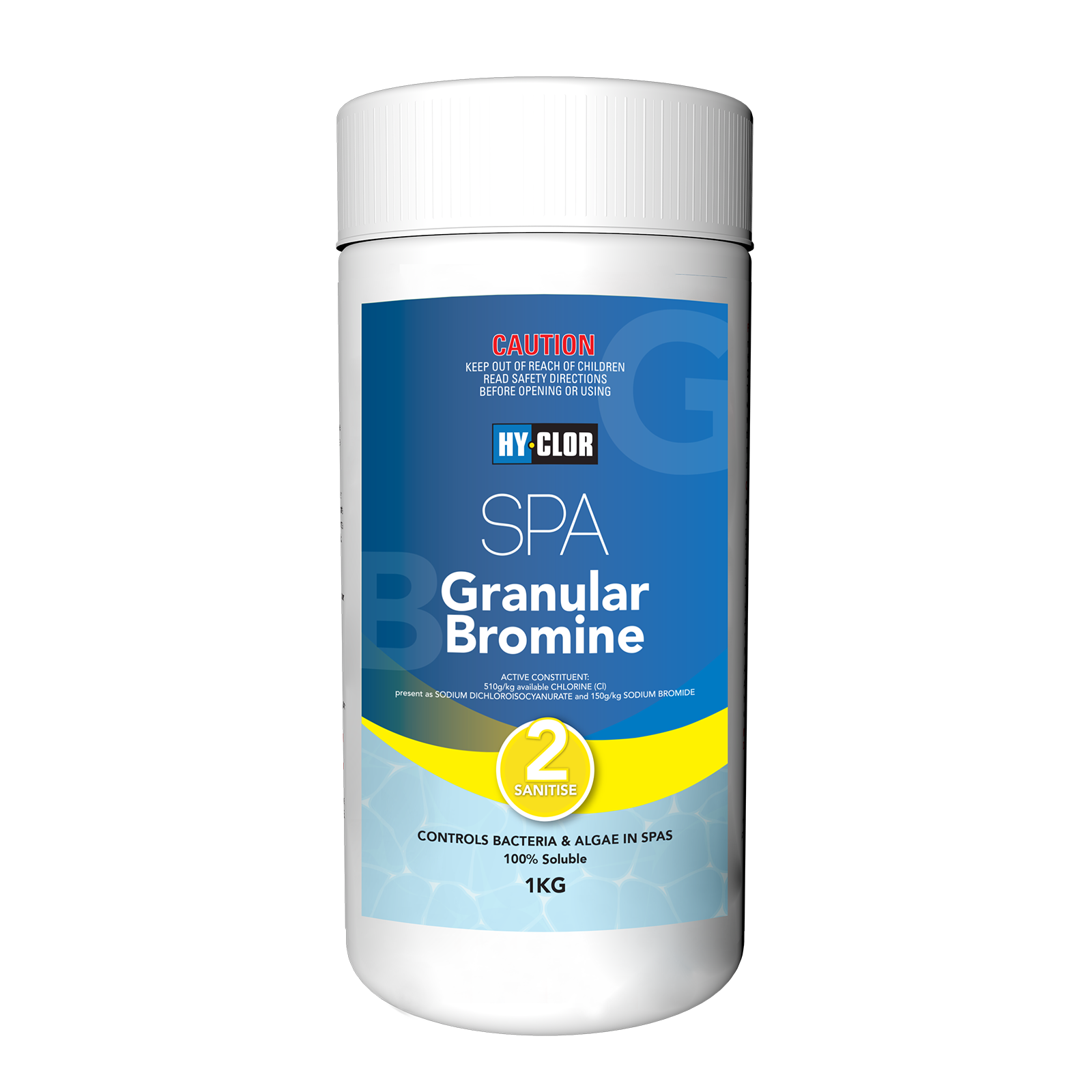
Bromine
Bromine is an effective sanitiser for pool water, killing bacteria and other contaminants. It’s similar to chlorine but less harsh and less likely to cause skin or eye irritation.
Bromine breaks down in direct sunlight faster than chlorine, Bromine is typically more costly than chlorine. Bromine has less oxidation power than chlorine, however it is more stable in higher temperatures and is ideal for heated spas.
To use bromine in your pool, add the suggested amount and use a test kit to maintain a bromine level of 3-5 ppm (parts per million).
Never mix chlorine and bromine in their dry forms or in your pool water, as this can create a dangerous reaction. If you’re making the switch between sanitising agents, it’s essential to thoroughly clean and drain your swimming pool beforehand.
Calcium Chloride
Calcium chloride works by increasing the calcium hardness levels in your pool to prevent the water from becoming too corrosive or too soft.
The calcium level of your pool refers to how ‘soft’ or ‘hard’ the water is. Maintaining a calcium hardness level of 200-400 ppm is required for the structural health of your swimming pool.
Calcium chloride is added to pools to increase calcium hardness, which prevents damage to pool surfaces and equipment and improves water quality.
Pool surfaces can get damaged if the water in the pool is too low in calcium hardness.
This can cause the water to become corrosive, leading to etching and staining of the pool surface, tiles, and grout.
Low calcium levels can also cause the pebble pools to deteriorate or cause calcium to be drawn out of the concrete walls which leads to bad staining and a rough and uncomfortable surface for swimmers.
Always wear chemically-resistant gloves and protective goggles when handling calcium chloride. This chemical can get very hot when added to water and cause burns if improperly handled.
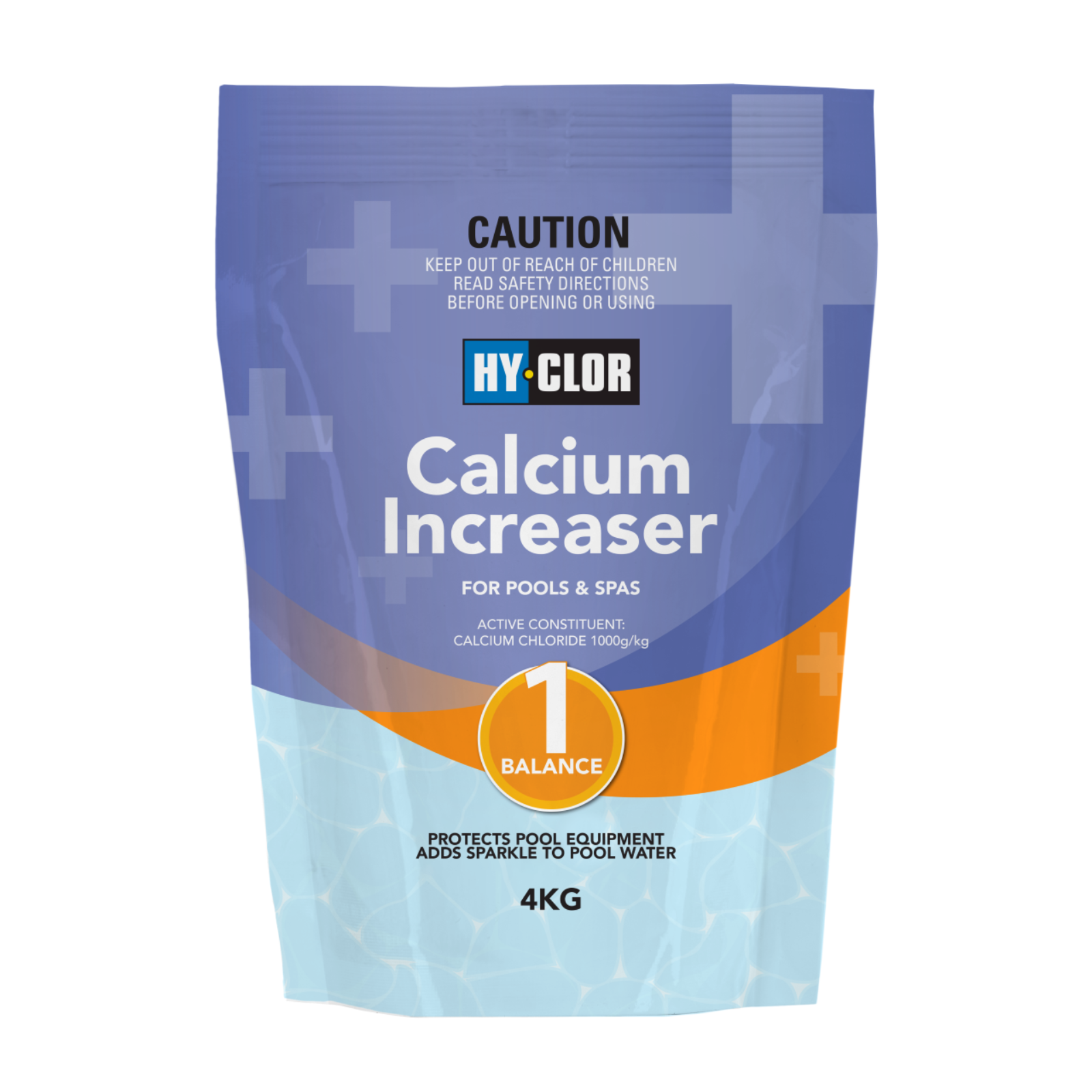
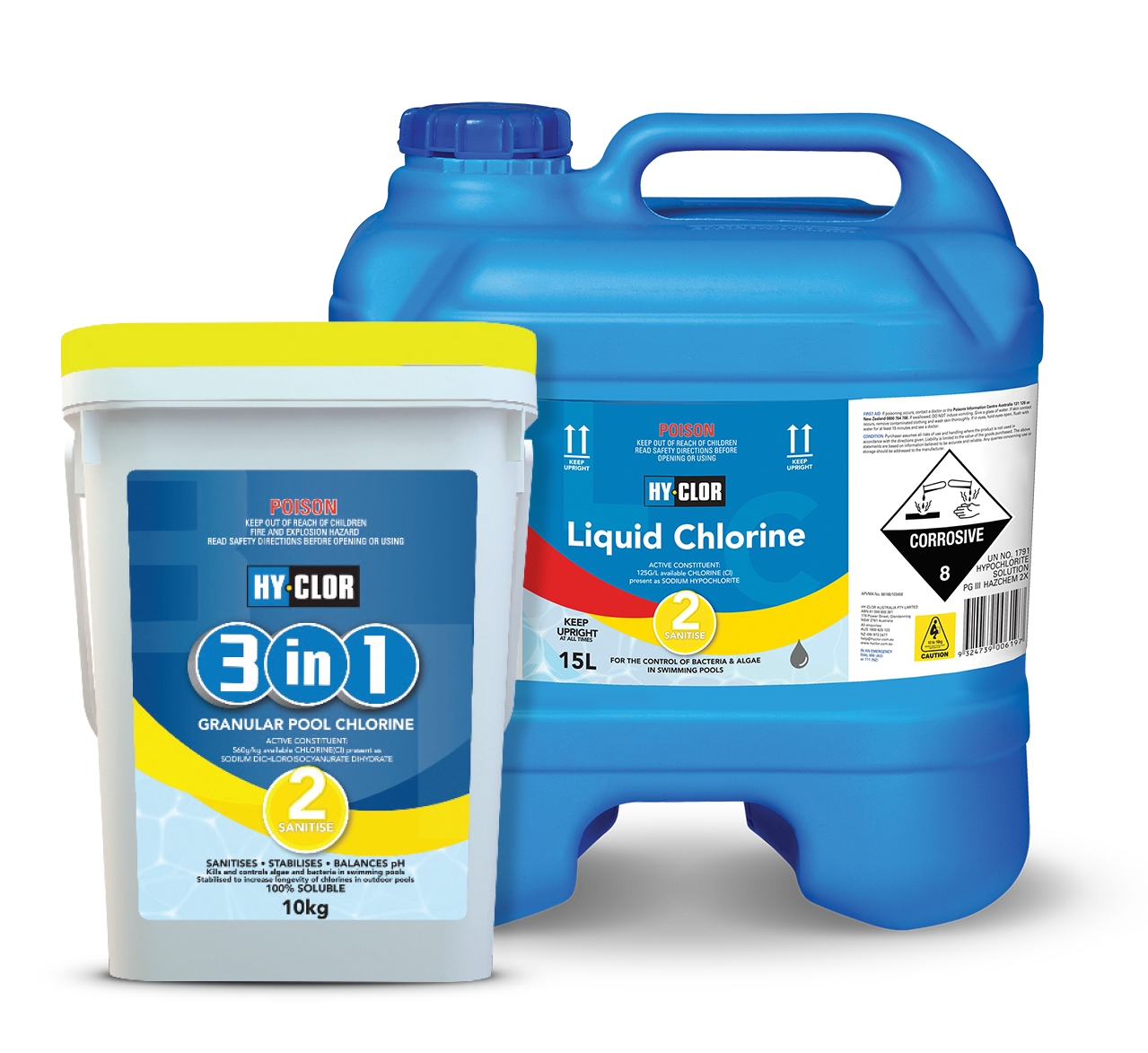
Chlorine
Chlorine is often considered the most vital chemical for keeping pool water clean. It acts as a disinfectant to kill harmful bacteria and germs. Various forms of chlorine are used to treat pools, including liquid, granular, and tablets.
To use chlorine in your pool, follow the manufacturer’s instructions and add the recommended amount. Aim to maintain a chlorine level of 1-3 ppm.
If chlorine is mixed with acid-based chemicals, such as muriatic acid or sodium bisulphate, it can create harmful gases, such as chlorine gas or chloramine. These dangerous gases can cause coughing, wheezing, and even respiratory damage. Always follow correct pool chemistry guidelines and never mix chlorine with other chemicals.
Clarifier
Pool clarifier is a helpful tool to eliminate cloudiness in your pool water. It works by binding together tiny particles floating in your water so your filter can easily catch them.
Clarifiers can react with algaecide and flocculant, creating an unwanted chemical reaction that can harm swimmers. It’s important to use the correct dosage of the clarifier and not let it come into contact with other chemicals that could cause dangerous reactions.
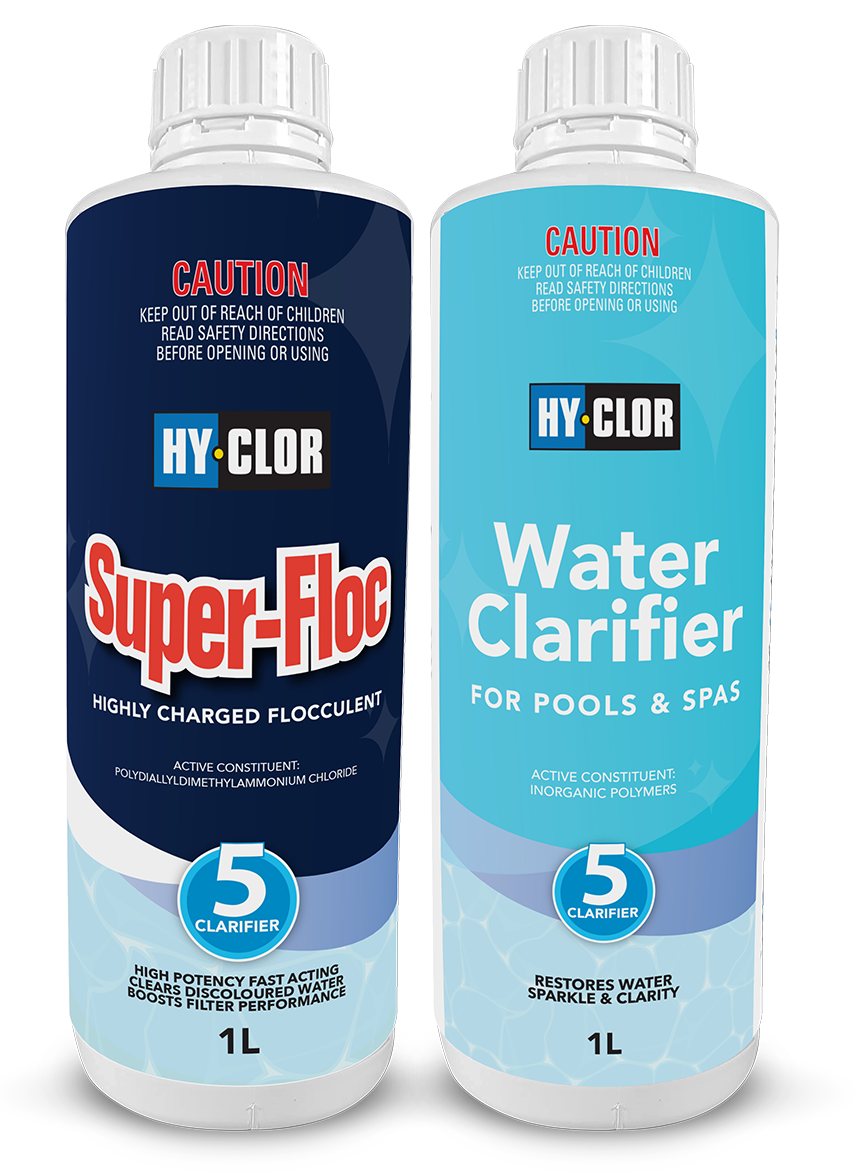
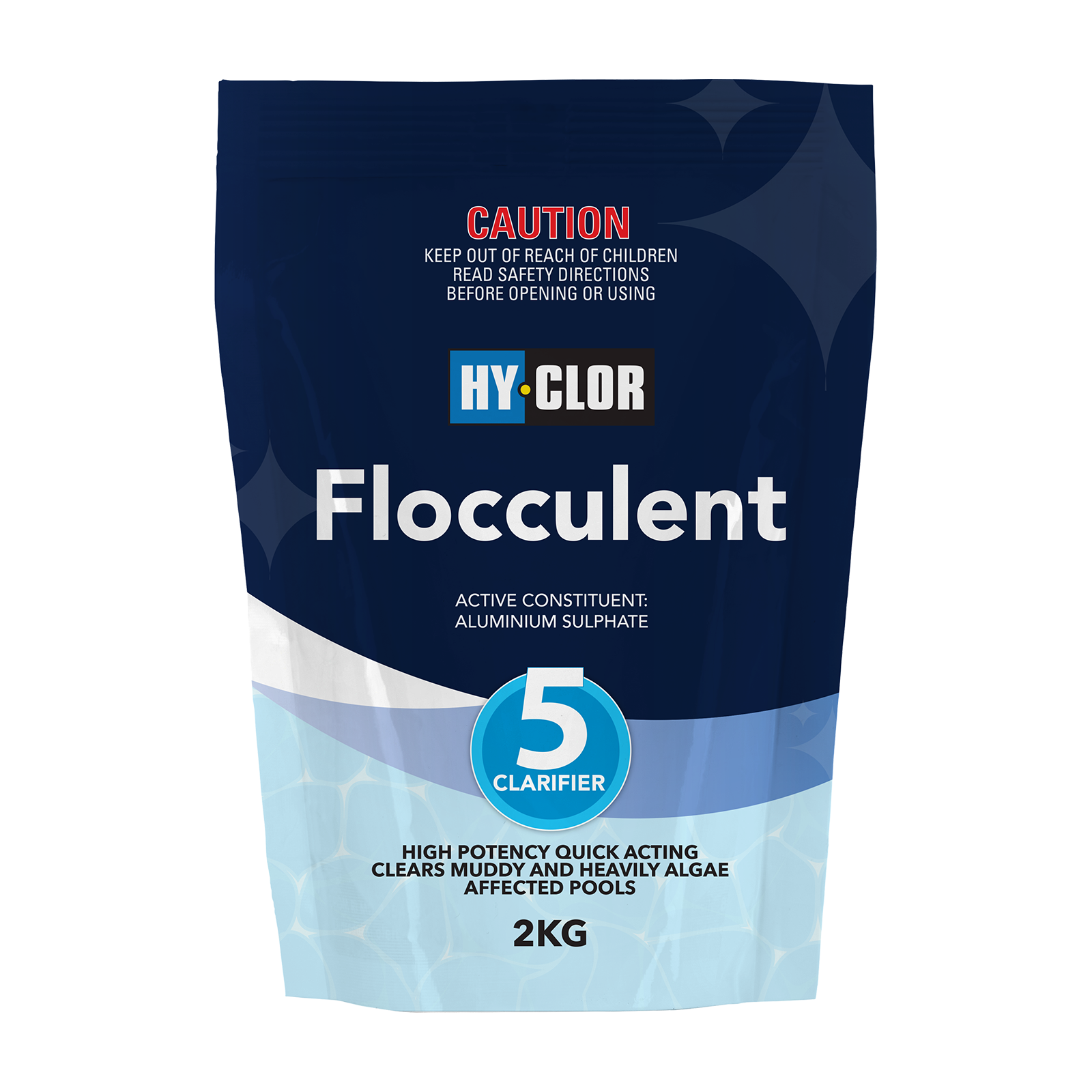
Flocculant
Flocculants effectively clear up a pool that is too cloudy or murky to see the bottom. It forms a sticky gel-like substance that attaches to small particles in the water, clumping them together. These clumps settle to the bottom of your pool, where they can be vacuumed up.
If you’ve shocked your pool, wait 24-48 hours before adding a flocculant. If you’ve just dosed your pool with chlorine as part of regular maintenance, you must test your water chemistry before adding a flocculant. If the alkalinity (80 – 120ppm) and pH (8.0+) levels and the chlorine level is between 1-3 ppm, you’re good to go.
While flocculant is safe to use in pools, you must be aware of its interactions with other pool chemicals. Never mix Flocculant with other chemicals and only put it in when chemistry has reached the above requirement, follow proper safety instructions and never mix different chemicals.
Note: Only suitable for sand filters or pools with a vacuum to waste option
pH Balancer
pH Balancers help maintain the pH levels in your pool. Balancer chemicals keep pH levels between 7.4 and 7.6, which is the ideal range for your pool water.
If the pH levels are too high or too low, the effectiveness of chlorine or other disinfectants may be reduced. Correct pH balance also ensures swimmers’ comfort without it, they risk developing skin rashes or having the water sting their eyes.
Testing the pH level of your pool water is the first step before using a balancer. If the pH level is too low (below 7.2), add a pH increaser if the pH level is too high (above 7.6), add a pH decreaser.
Never mix pH Balancer with chlorine, as this can create a dangerous and toxic gas. Waiting for 30 minutes or more between pool chemical applications is a good idea.

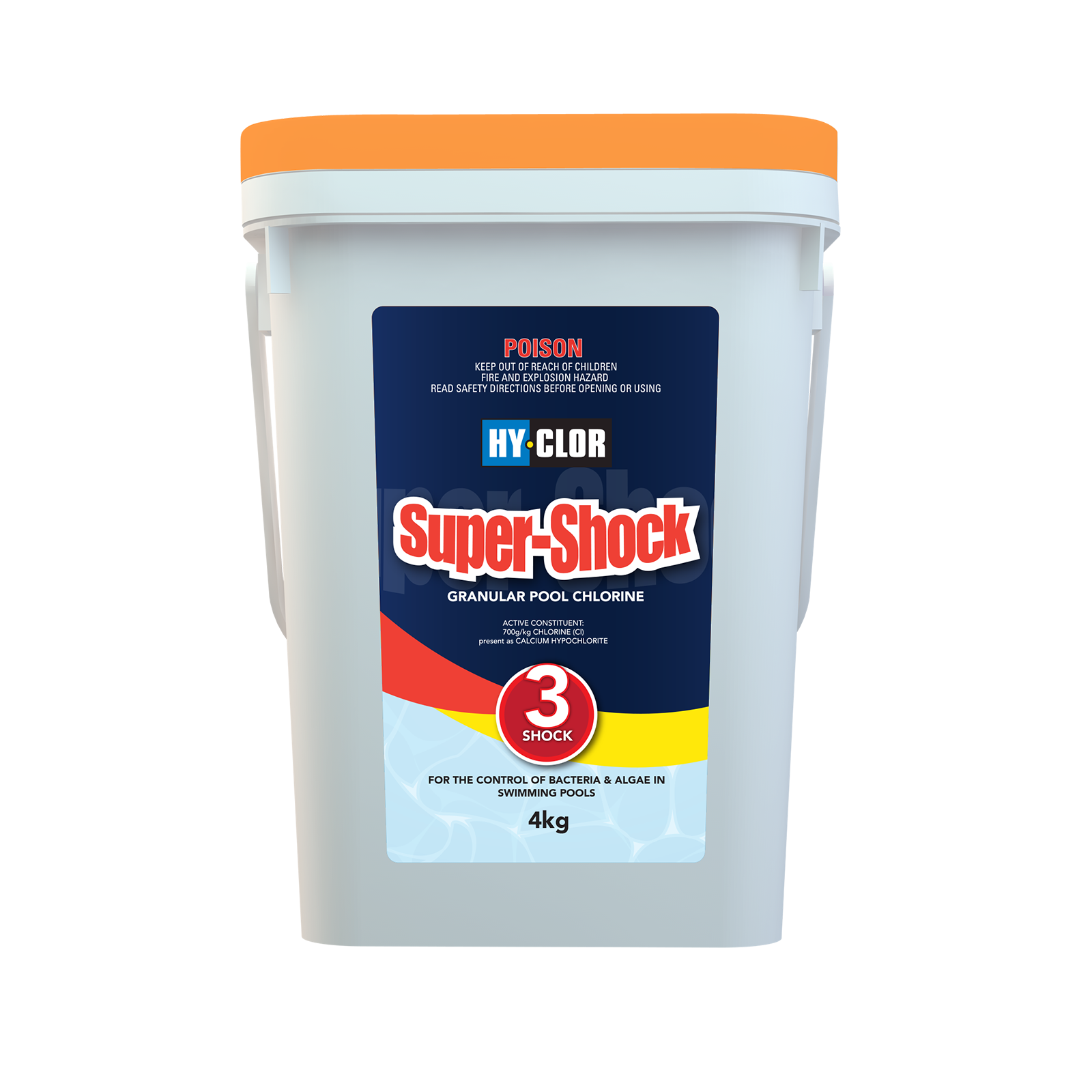
Shock
Pool shock is a powerful oxidiser that destroys bacteria and other contaminants by quickly increasing the chlorine level in your pool water. Signs such as a significant drop in chlorine levels, cloudiness, or an unpleasant odour indicate that shock treatment is necessary.
To ensure the shock treatment is effective:
- Test your pool water’s pH level and adjust it if needed.
- Dilute the shock powder in a bucket of water and pour it around your pool’s perimeter while the pump and filter run.
- Run your pool’s pump and filter for at least 8 hours so the shock treatment distributes throughout the water.
- After 48 hours, test your pool’s water again to check the chlorine and pH levels. Your water is safe for swimming when the chlorine level drops to 1-3 ppm.
Mixing shock with chlorine tablets or granules could lead to dangerous chemical fires, explosions, or the release of hazardous fumes. Always follow the manufacturer’s instructions and use gloves and goggles when handling pool shock.
Stabiliser
Stabiliser, also known as cyanuric acid, prevents chlorine from being destroyed by the sun’s UV rays. It is often referred to as a pool’s sunscreen. Without stabiliser, chlorine would break down rapidly, leaving your pool vulnerable to algae and bacteria growth.
Ensure that stabiliser (Cyanuric Acid) levels are within the recommended range of 30-50 ppm, and never add more than necessary.
Stabiliser can react with other pool chemicals such as shock and algaecide. These reactions can produce dangerous levels of cyanuric acid, harming swimmers and making your pool water cloudy and difficult to maintain.

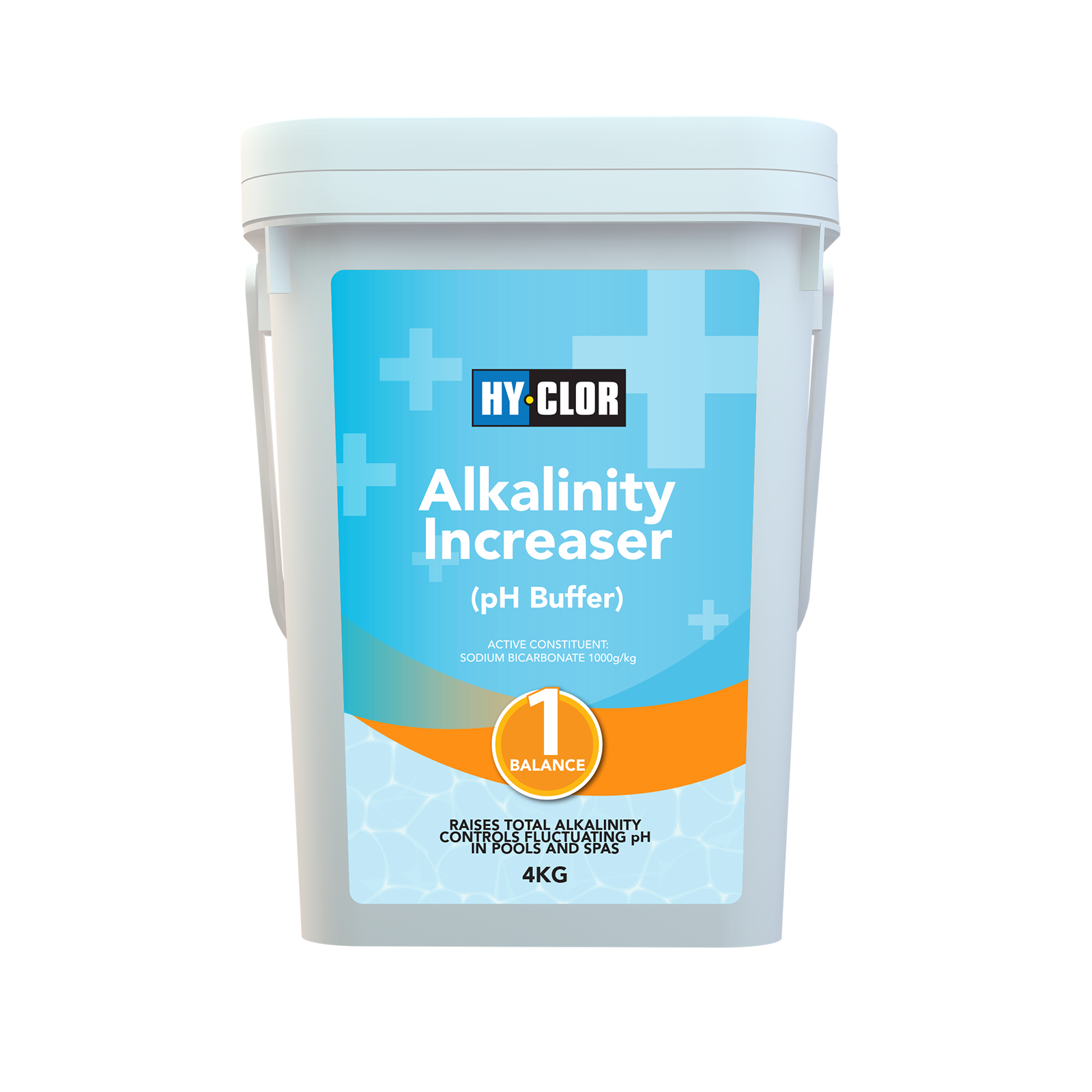
Alkalinity
Alkalinity is an important water chemistry that is used in a pool to help stabilise the pH level of the water. The alkalinity level of pool water is a measure of its ability to resist rapid changes in pH.
By keeping Alkalinity level within the 80ppm to 120ppm range, the water is more comfortable for swimmers and reduces the need for frequent PH adjustments. It also helps to prolong the life of pool equipment.
It is good to note that Alkalinity increaser not only increases Alkalinity but also increases pH levels.
Salt
Salt is an important part of pool chemistry if you have a chlorinator. The chlorinator converts your pool salt into chlorine.
Having enough salt in the water will allow your pool to have a stable chlorine level, and it is chlorine that does the very important job of sanitising your pool.
Your chlorinator has a maximum and minimum level of salt required. Check with your manufacturer for the correct recommended levels.
It’s important to note that while saltwater pools require less maintenance than traditional pools, they still require regular testing and maintenance to ensure proper water chemistry balance. Additionally, the initial installation cost of a saltwater system can be higher than traditional chlorine systems, although the cost savings over time can offset this initial investment.
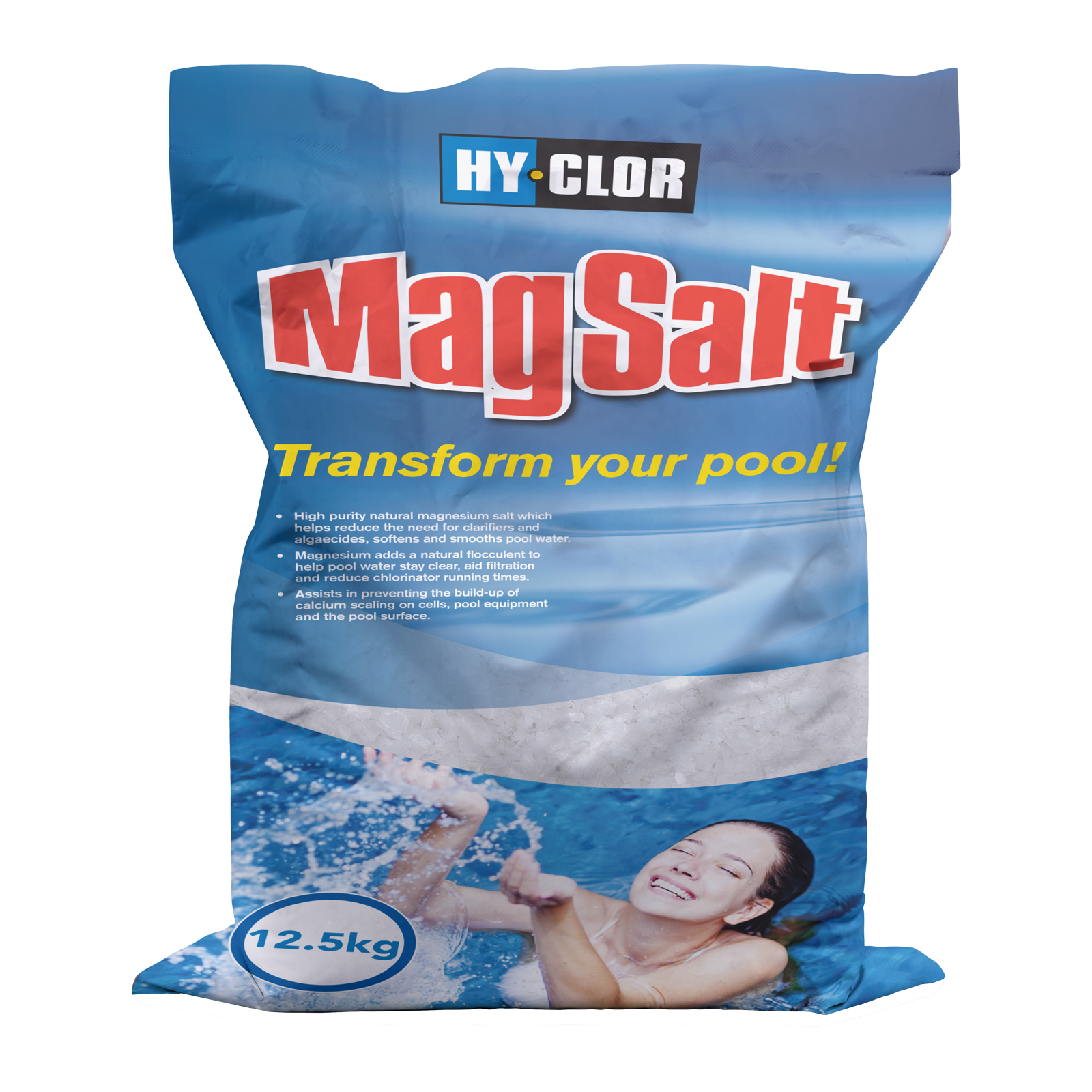

In What Order Should You Add Chemicals to Your Pool?
Now that you have a list of the pool chemicals you need, here’s a quick reference guide on adding these chemicals to your pool in the correct order.
- Adjust your pool’s alkalinity to between 80-120 ppm with Hy-Clor Alkalinity Increaser.
- Balance pH levels to between 7.2-7.6 using Hy-Clor pH Decreaser (dry acid) to lower readings or Hy-Clor pH Increaser (soda ash) to raise them.
- Raise calcium hardness using Hy-Clor Calcium Increaser to a level of 200-400 ppm.
- Achieve a stabiliser (cyanuric acid) level of 30-50 ppm with Hy-Clor Stabiliser.
- Add chlorine in liquid, granular, or tablet form to achieve a level of 1-3 ppm.
Do You Need To Speak to a Pro About Maintaining Your Pool?
No, you’ve got this! Several of these chemicals only require intermittent use but it’s great to know what they do.
Now that you know what each of these chemicals are used for, you can manage your pool with confidence.
If you are you still wondering- what pool chemicals do I need?
Hy-Clor’s team of experts is here to help! We can advise you on the right chemicals to use and the best maintenance plan for your pool.
For more information, please fill out our online enquiry form. Alternatively, visit your nearest Bunnings Warehouse for our full range of products.
